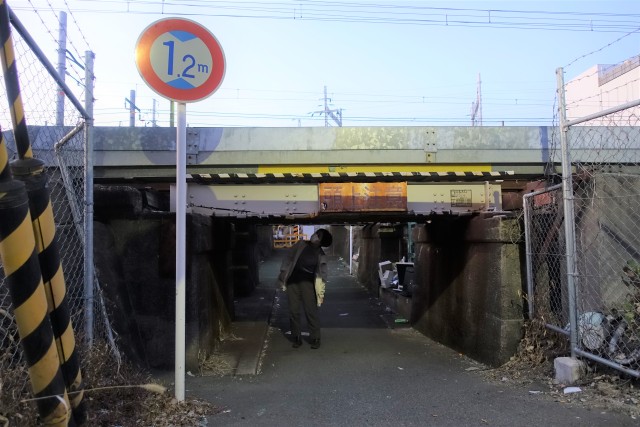
So low it’s said to cause injuries and deaths, but locals here throw caution to the wind when using it.
In Japan, land is so scarce in big cities that efforts are made to utilise every available space to its maximum potential, including the areas beneath railroad tracks.
Usually, these spots are filled up with parking lots or cheap, cosy, hole-in-the-wall bars and restaurants. However, over in Osaka, you’ll find a space beneath the railroad tracks that’s so low it can’t even be used for cars to pass through. That hasn’t stopped local cyclists and pedestrians from using it as a handy shortcut, though, and when our reporter Haruka Takagi was in the area recently, she decided to stop by to see the unusual underpass for herself.
▼ Located in Osaka City’s Yodogawa Ward, Japan’s lowest underpass is in a residential area, around a 15-minute walk from Tsukamoto Station.
Once she arrived at the underpass, she saw signs indicating that the space between the ground and the girders was 1.2 metres (3.9 feet) high, which is about the same height as a child in the lower grades of elementary school.
▼ The lowest underpass in Japan.
Haruka is around 156 centimetres tall and usually has no problems with ceiling heights, but here, even she had to bend over as she walked beneath the tracks.
▼ Yes — that’s a working railway track above her.
Haruka knew the underpass would be low, but she couldn’t quite believe her eyes when she saw it for the first time. From the top of the slope at one end of the passage, the railroad tracks were located at her eye-level, and she’d never seen anything quite like it.
▼ She got another surprise when she actually walked through the passage, as the 1.2-metre signs appeared to refer to the minimum height.
There were places where she could stand upright, but in those sections, the train basically passes within centimetres from the top of your head, so Haruka remained bent over as she walked through.
▼ It’s rare to be able to see railroad tracks and passing trains up close like this.
After about ten minutes of exploring and photographing the underpass, Haruka noticed there were plenty of people passing through here. And it wasn’t just pedestrians using the passage but cyclists, ducking and cycling through with the speed and confidence of someone who’s ridden this path for years.
▼ Even people on motorcycles and scooters zoomed through without stopping to slow down.
▼ Despite the ridiculously low height, it’s not illegal for bicycles, motorbikes and scooters to use this passage.
Curious to find out how locals feel about the potential dangers of the thoroughfare, Haruka stopped a passing pedestrian, who was more than happy to provide her with some insightful details.
Haruka: “I was wondering what locals think about the dangerously low passage here.”
Local: “We don’t mind it.”
Haruka: “I was actually surprised to see so many people using it, despite its tiny size. Why is it so popular?”
Local: “It’s a shortcut. There’s a railroad crossing east of here, but everyone uses this underpass instead because it’s easier to get to than the railroad crossing.”
▼ Haruka did find the railroad crossing later on, and while it looked a lot safer, it was a ten-minute walk away.
Haruka: “Still, aren’t you scared when you see people zoom through the tunnel at high speed?”
Local: “You get used to it. But some people get injured from time to time.”
Haruka: “Injured?! That’s not safe.”
Local: “The south side of the underpass has a bit of a steep incline. That causes cyclists to lose momentum, and if they raise their head there by accident to regain momentum before clearing the exit, they can hit their head on the bottom of the railroad track. Sometimes people end up with bloody heads and have to be taken away to hospital by ambulance.”
▼ The incline at the other end of the tunnel.
Haruka: “That’s terrible. Have you actually witnessed someone being taken away by ambulance?”
Local: “Yes. I even called an ambulance once, when a person who was bleeding from their forehead asked for help.”
Haruka was shocked to hear that the thoroughfare was still being used despite these accidents, but the local went on to explain:
“In the old days, this road was a gravel path, and the ground was about 20 centimetres (7.9 inches) higher than it is now.”
▼ That means it was originally around as high as this curb inside the tunnel.
Local: “I heard that one day there was a person who hit their head on the railroad track and died, so their relatives dug the path down to the level it is now, and it was paved over at that same level.”
Haruka was saddened to hear the horrible history of the underpass, and after bidding farewell to the helpful local, she did some extra research to try and find out more about these past events. However, all her investigations were met by dead ends, so it appears that these stories remain local hearsay.
Still, Haruka wouldn’t be surprised at all if there was some truth to these stories, especially after she attempted to duck under the girders while a train was passing overhead. She’d never been in such close proximity to the undercarriage of a train before, and it was truly frightening.
▼ Haruka filmed the moment the train went by, letting out an involuntary gasp of “kowai” (“scary”) at the end of the clip.
▼ This is how close her head was to the girders… and the passing train.
Japan’s lowest underpass turned out to be a lot more frightening and dangerous than Haruka originally thought, and she hopes the local council will work to keep people safe by at least replacing the signs warning people to watch their heads as they enter and exit the tunnel, which are currently rusty and covered in graffiti (seen in the photo above).
Because, if history has taught us anything, when people lose their heads in Japan, they can turn into spirits so vengeful they demand “more care than a nuclear weapon”.
Photos ©SoraNews24
● Want to hear about SoraNews24’s latest articles as soon as they’re published? Follow us on Facebook and Twitter!
[ Read in Japanese ]

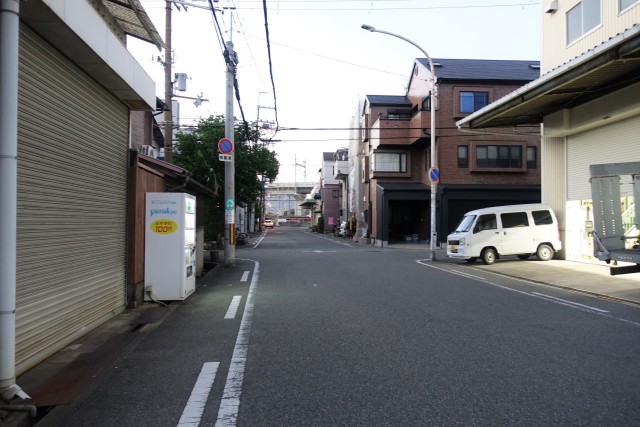
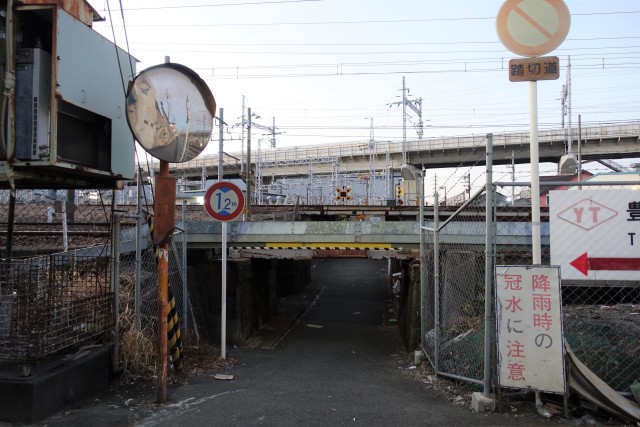
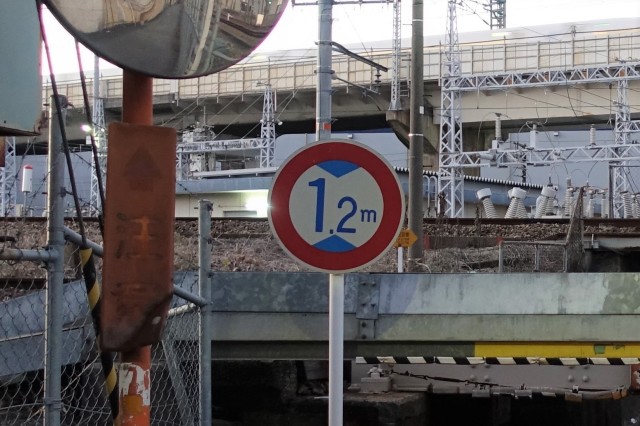
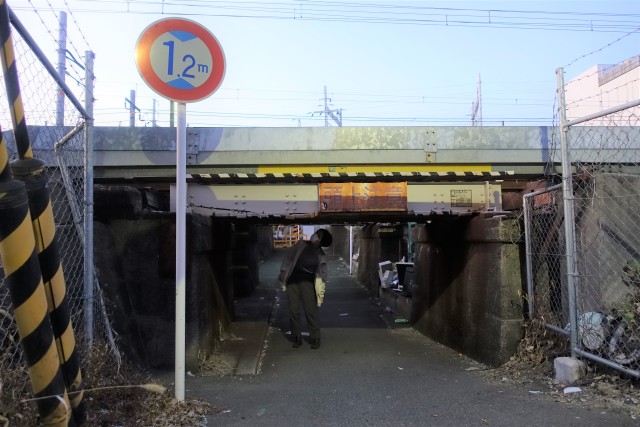
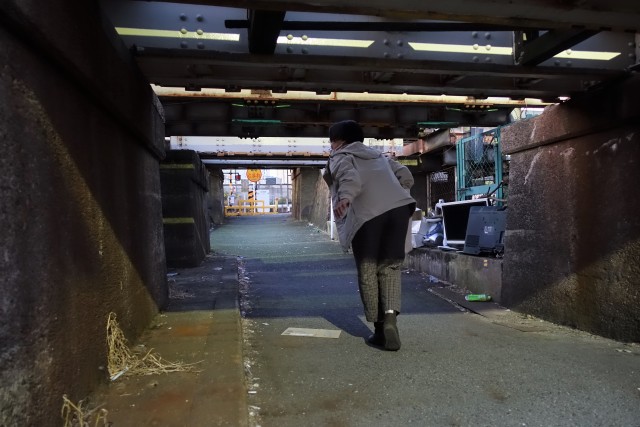
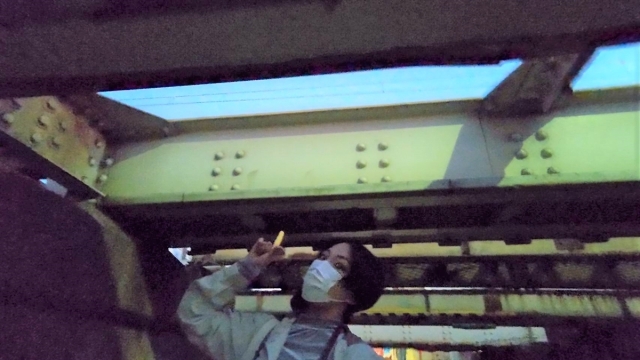
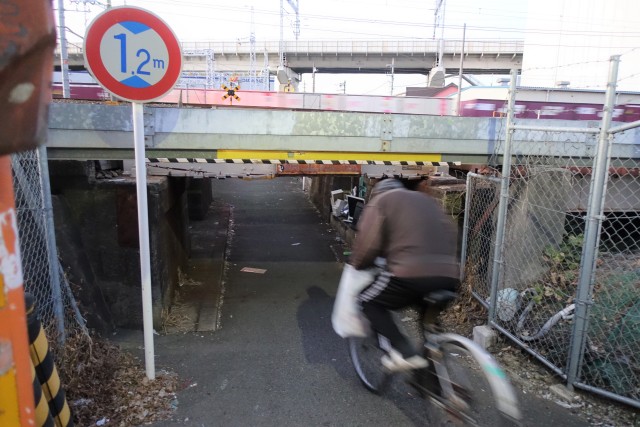
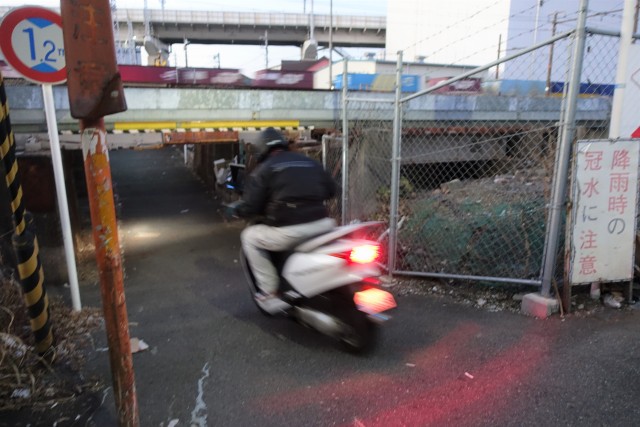
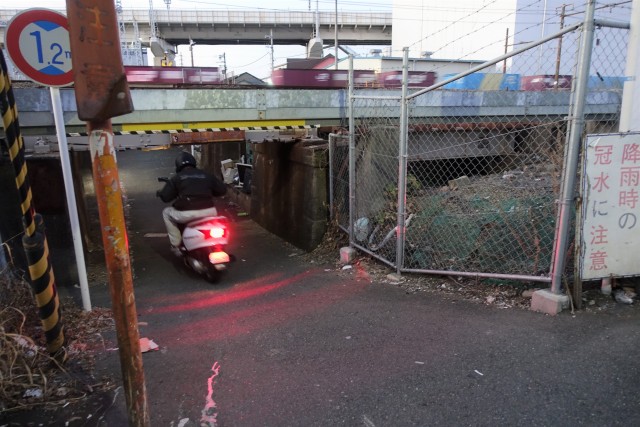
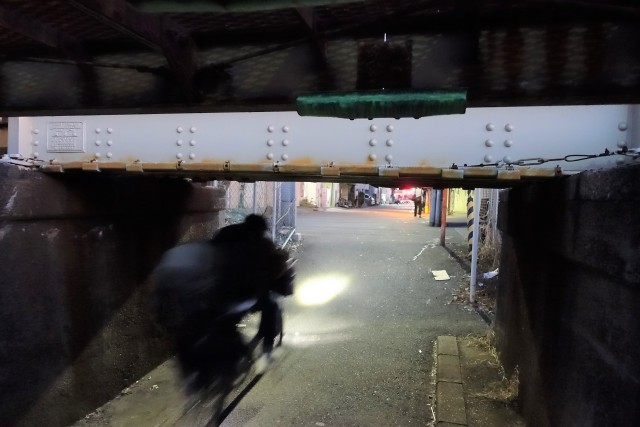
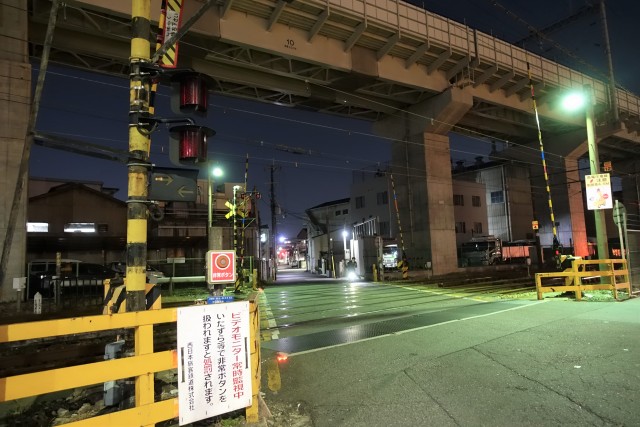
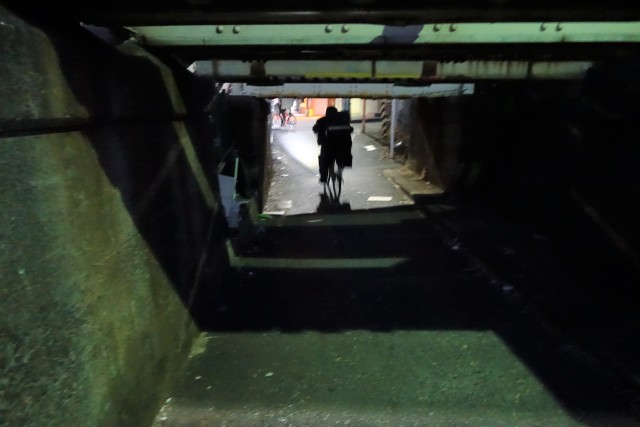
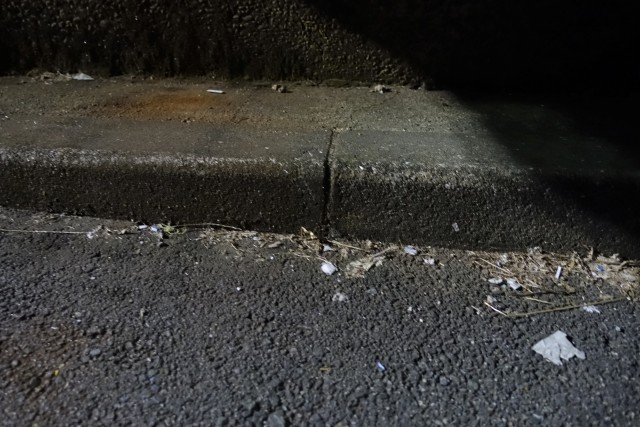
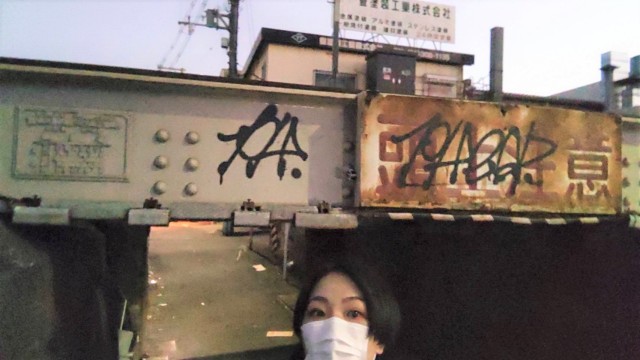
 We visit a train station in historical ninja town, see ninja trick art, and become ninjas ourselves
We visit a train station in historical ninja town, see ninja trick art, and become ninjas ourselves Making a traditional Japanese dessert from “heaven grass”【Photos】
Making a traditional Japanese dessert from “heaven grass”【Photos】 Giant 100-meter-long Super Mario mural is coming to Kyoto
Giant 100-meter-long Super Mario mural is coming to Kyoto Amigara Fault for cars?! Tunnel in Okayama just barely big enough for vehicles to fit through
Amigara Fault for cars?! Tunnel in Okayama just barely big enough for vehicles to fit through We hunt for Dom Pérignon in these wine fukubukuro lucky bag boxes from Kaldi
We hunt for Dom Pérignon in these wine fukubukuro lucky bag boxes from Kaldi Foreigner’s request for help in Tokyo makes us sad for the state of society
Foreigner’s request for help in Tokyo makes us sad for the state of society Ghibli Park now selling “Grilled Frogs” from food cart in Valley of Witches
Ghibli Park now selling “Grilled Frogs” from food cart in Valley of Witches Harajuku Station’s beautiful old wooden building is set to return, with a new complex around it
Harajuku Station’s beautiful old wooden building is set to return, with a new complex around it Smash Bros. director Sakurai stabs Kirby in the face, has delicious justification for it
Smash Bros. director Sakurai stabs Kirby in the face, has delicious justification for it Red light district sushi restaurant in Tokyo shows us just how wrong we were about it
Red light district sushi restaurant in Tokyo shows us just how wrong we were about it Osaka governor suggests lowering voting age to 0 to curb population decline
Osaka governor suggests lowering voting age to 0 to curb population decline Historical figures get manga makeovers from artists of Spy x Family, My Hero Academia and more
Historical figures get manga makeovers from artists of Spy x Family, My Hero Academia and more Suntory x Super Mario collaboration creates a clever way to transform into Mario【Videos】
Suntory x Super Mario collaboration creates a clever way to transform into Mario【Videos】 The five least stressful jobs, as ranked by Japanese working people
The five least stressful jobs, as ranked by Japanese working people Japanese politician’s birthrate plan: Have parents nag their kids to have “at least three babies”
Japanese politician’s birthrate plan: Have parents nag their kids to have “at least three babies” McDonald’s new Happy Meals offer up cute and practical Sanrio lifestyle goods
McDonald’s new Happy Meals offer up cute and practical Sanrio lifestyle goods Japanese ramen restaurants under pressure from new yen banknotes
Japanese ramen restaurants under pressure from new yen banknotes French Fries Bread in Tokyo’s Shibuya becomes a hit on social media
French Fries Bread in Tokyo’s Shibuya becomes a hit on social media Studio Ghibli releases new action figures featuring Nausicaä of the Valley of the Wind characters
Studio Ghibli releases new action figures featuring Nausicaä of the Valley of the Wind characters New private rooms on Tokaido Shinkansen change the way we travel from Tokyo to Kyoto
New private rooms on Tokaido Shinkansen change the way we travel from Tokyo to Kyoto Tokyo Tsukiji fish market site to be redeveloped with 50,000-seat stadium, hotel, shopping center
Tokyo Tsukiji fish market site to be redeveloped with 50,000-seat stadium, hotel, shopping center All-you-can-drink Starbucks and amazing views part of Tokyo’s new 170 meter-high sky lounge
All-you-can-drink Starbucks and amazing views part of Tokyo’s new 170 meter-high sky lounge Beautiful Ghibli sealing wax kits let you create accessories and elegant letter decorations【Pics】
Beautiful Ghibli sealing wax kits let you create accessories and elegant letter decorations【Pics】 Studio Ghibli releases Kiki’s Delivery Service chocolate cake pouches in Japan
Studio Ghibli releases Kiki’s Delivery Service chocolate cake pouches in Japan New definition of “Japanese whiskey” goes into effect to prevent fakes from fooling overseas buyers
New definition of “Japanese whiskey” goes into effect to prevent fakes from fooling overseas buyers Our Japanese reporter visits Costco in the U.S., finds super American and very Japanese things
Our Japanese reporter visits Costco in the U.S., finds super American and very Japanese things Studio Ghibli unveils Mother’s Day gift set that captures the love in My Neighbour Totoro
Studio Ghibli unveils Mother’s Day gift set that captures the love in My Neighbour Totoro More foreign tourists than ever before in history visited Japan last month
More foreign tourists than ever before in history visited Japan last month New Pokémon cakes let you eat your way through Pikachu and all the Eevee evolutions
New Pokémon cakes let you eat your way through Pikachu and all the Eevee evolutions Sales of Japan’s most convenient train ticket/shopping payment cards suspended indefinitely
Sales of Japan’s most convenient train ticket/shopping payment cards suspended indefinitely Sold-out Studio Ghibli desktop humidifiers are back so Totoro can help you through the dry season
Sold-out Studio Ghibli desktop humidifiers are back so Totoro can help you through the dry season Japanese government to make first change to romanization spelling rules since the 1950s
Japanese government to make first change to romanization spelling rules since the 1950s Ghibli founders Toshio Suzuki and Hayao Miyazaki contribute to Japanese whisky Totoro label design
Ghibli founders Toshio Suzuki and Hayao Miyazaki contribute to Japanese whisky Totoro label design Doraemon found buried at sea as scene from 1993 anime becomes real life【Photos】
Doraemon found buried at sea as scene from 1993 anime becomes real life【Photos】 Tokyo’s most famous Starbucks is closed
Tokyo’s most famous Starbucks is closed One Piece characters’ nationalities revealed, but fans have mixed opinions
One Piece characters’ nationalities revealed, but fans have mixed opinions We asked a Uniqlo employee what four things we should buy and their suggestions didn’t disappoint
We asked a Uniqlo employee what four things we should buy and their suggestions didn’t disappoint Princesses, fruits, and blacksmiths: Study reveals the 30 most unusual family names in Japan
Princesses, fruits, and blacksmiths: Study reveals the 30 most unusual family names in Japan Is a camping toaster from Daiso any good? We tested one so you don’t have to!
Is a camping toaster from Daiso any good? We tested one so you don’t have to! The most expensive ice cream in Japan? Metallic soft serve frays the nerves of staff who make it
The most expensive ice cream in Japan? Metallic soft serve frays the nerves of staff who make it This unstaffed Japanese train station is like a Ghibli anime come to life
This unstaffed Japanese train station is like a Ghibli anime come to life Vending machine noodle ice cream: A retro icon in Japan brings joy to a new generation
Vending machine noodle ice cream: A retro icon in Japan brings joy to a new generation Do you know what this caterpillar-like food is? We had no idea!【Taste test】
Do you know what this caterpillar-like food is? We had no idea!【Taste test】 Weird Japanese vending machine find gives us unique sweet potato sweets
Weird Japanese vending machine find gives us unique sweet potato sweets Puyo Puyo Manju return after 21 years…and our Puyo Puyo fan reporter achieves a childhood dream
Puyo Puyo Manju return after 21 years…and our Puyo Puyo fan reporter achieves a childhood dream Weird Japanese vending machine comes with a heartwarming twist
Weird Japanese vending machine comes with a heartwarming twist We visit Kaiyodo Kappa Museum: dedicated to a yokai that loves cucumbers and human souls
We visit Kaiyodo Kappa Museum: dedicated to a yokai that loves cucumbers and human souls Can slapping on some nose filters prevent the anguish of hay fever?
Can slapping on some nose filters prevent the anguish of hay fever? Daiso vs. Seria: Which sells the better egg white whipper? We find out【SoraKitchen】
Daiso vs. Seria: Which sells the better egg white whipper? We find out【SoraKitchen】 Man arrested for stealing a pack of lactic acid drinks from Osaki City Hall
Man arrested for stealing a pack of lactic acid drinks from Osaki City Hall This rare autumn vegetable is the perfect addition to your stir-fry or salad【SoraKitchen】
This rare autumn vegetable is the perfect addition to your stir-fry or salad【SoraKitchen】 Hey, Thai tuk-tuk driver! Take us to the best Thai restaurant in this part of Bangkok!
Hey, Thai tuk-tuk driver! Take us to the best Thai restaurant in this part of Bangkok! How much difference does the choice of mold make in fermenting food?
How much difference does the choice of mold make in fermenting food?
Leave a Reply